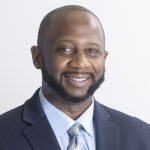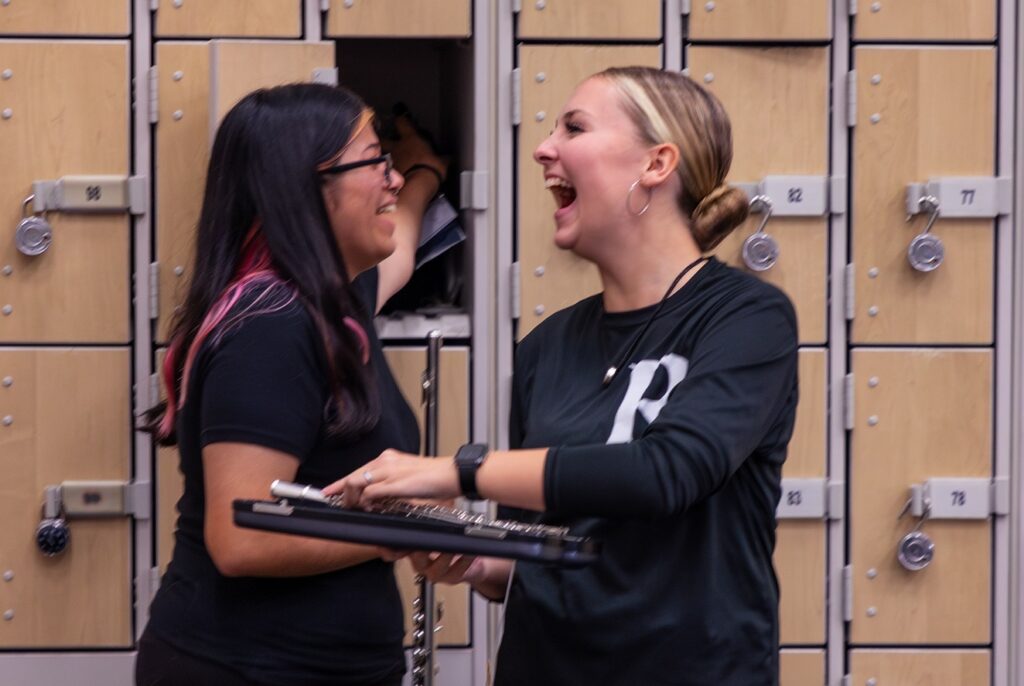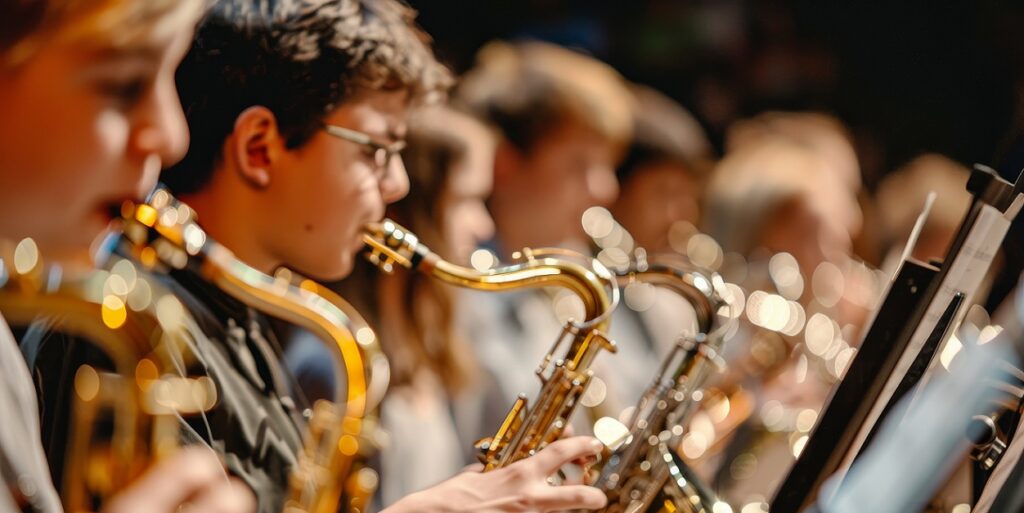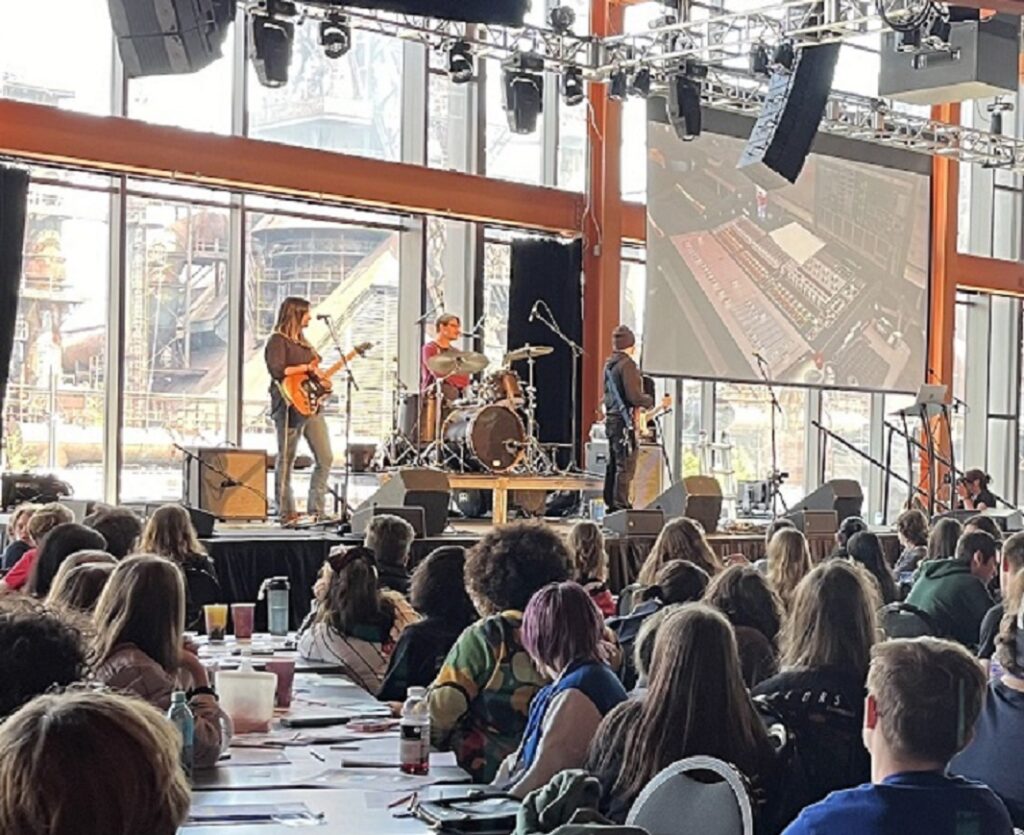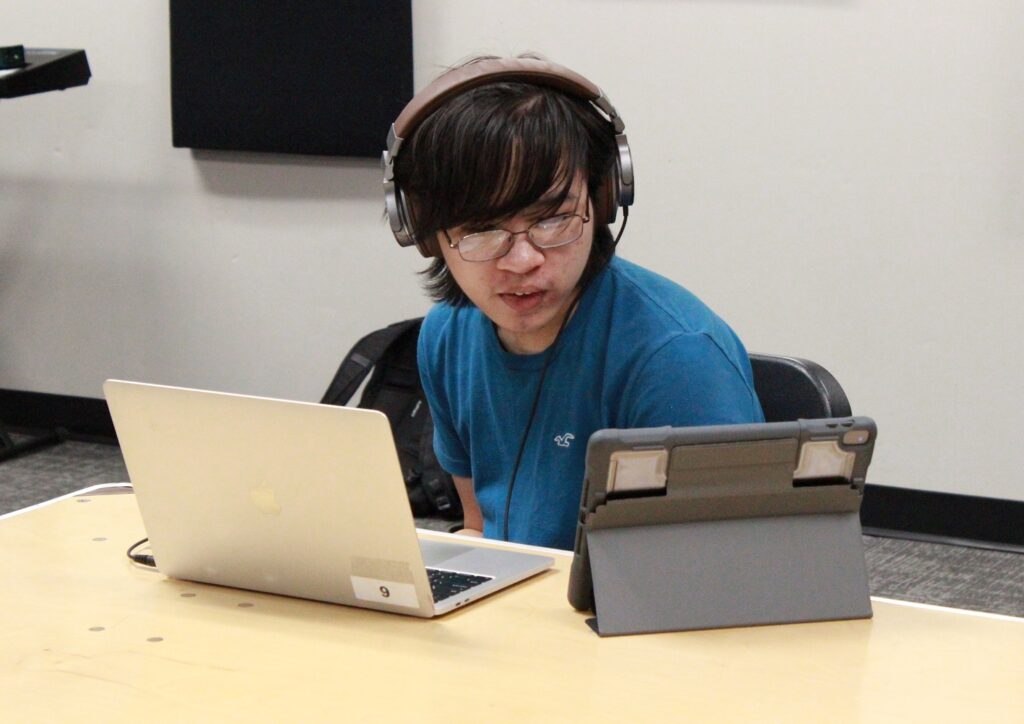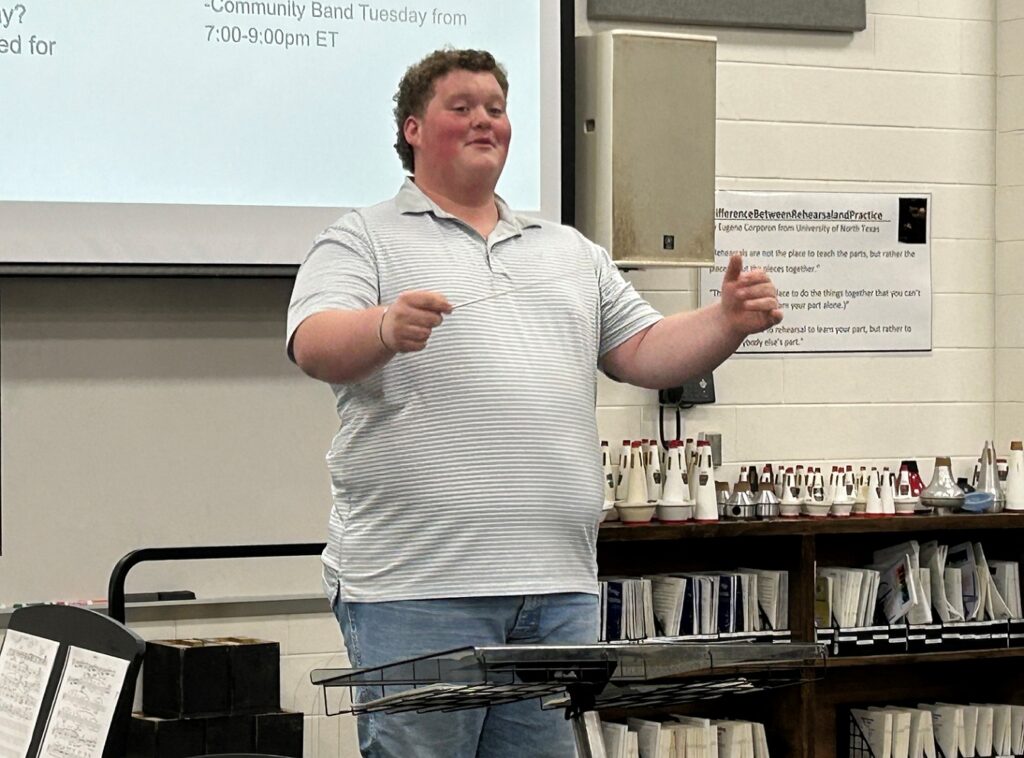Tagged Under:
Teaching Music in High Need Schools: Defining Success
In Part 3 of this series, we share how to build curricula and create experiences that give our students the best chance to succeed.
Defining what success looks like for our students and our program can be a contentious topic. Regardless of the uniqueness of the setting in which we teach, we were trained in college music programs that gave us the necessary knowledge, skills and attitudes to build a program based upon the traditional licensure pathways of general, vocal and instrumental music. Throughout the country, however, we see that more music teachers are offering a diverse array of music-making experiences. Depending on our knowledge of and exposure to a variety of musical styles, we may have doubts about our preparedness to create these experiences.
Most of what we initially conceptualize as success is informed by our own experiences in K-12 and collegiate music organizations. Concerts, tours, field trips, large and small ensemble assessments, competitions, community events and the awards we receive from these performances usually influence our perception of a program’s success. Large enrollments, the percentage of students with high GPAs and academic honors, and the number of students who make all-state, regional and district-level ensembles can also build a narrative that allows parents, administrators and the community to define success by these indicators.
This article, however, shares how we can look at different ways to more authentically measure success. By knowing our students and the assets they bring to the classroom, understanding our own strengths and weaknesses, and creating unique music-making opportunities for our students that are relevant and content-rich, we can reconceptualize what success can be.
Know Students’ Assets
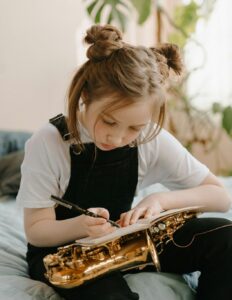
Students bring a wealth of knowledge and skills into our classrooms that we are sometimes unaware of. All too often, I go to classrooms where the teacher’s expectations and current circumstances do not align, and the teacher has fallen into a deficit thinking mindset. Instead of seeing what students can offer to help build the program, the teacher only sees what is lacking. This mode of thinking can often mislabel students from underserved communities and assume that the reason why students are struggling is because of factors that inherently prevent their own progress — i.e., lack of motivation, inadequate family support or cultural differences. This thinking, however, can be easily remedied by first developing a rapport with our students, and then by learning more about their life experiences and musical interests.
Knowing what my students were already bringing into the classroom helped me to incorporate different musical genres and a variety of ensembles into the classroom. My first job was as a high school band director in 2006. The school was relatively new and the administration was very supportive. This allowed us to dream big and offer a variety of ensembles beyond traditional band, choir and orchestra. Though the term did not exist at the time, we were at the forefront of the modern band movement that helped get more students involved in music-making at the secondary school level. We also decided to turn one of our storage closets into a music production studio, had it retrofitted with all the necessary equipment and acoustic treatments, and partnered with the Dallas Austin Foundation to provide in-school and after-school music production, audio engineering and beat-making classes. By understanding our students’ interests, we were able to provide them with deeply impactful experiences that shaped their development as both musicians and people.
Understand Our Strengths and Weaknesses

Though I am now an advocate and practicing clinician for popular music education and technology, I did not have the necessary skill sets to teach music production, notation software or live sound reinforcement when I began my teaching career. Even though these areas are tested on music teacher licensure examinations, I did not have any classes or formal training in college. Some of the knowledge I gained came from being involved in jazz combos and big bands while I was in high school and college, and some other skills came from my own curiosity and wanting to know more about the music industry and how it functions. I used my own experiences and strengths to improve myself in areas where I believed I was underprepared.
To feel more confident about creating and facilitating more modern music classes for my students, I invested in myself through professional development and MOOCs (Massive Open Online Courses). I joined the Association for Popular Music Education and attended workshops through Technology in Music Education. MOOCs are also an excellent way to acquire new skills at an affordable price — and sometimes even for free! After I completed the music production specialization MOOC by Berklee College of Music through Coursera, I realized that all the time I invested in my development had turned what was once a weakness into one of my strengths.
Make Unique Music-Making Opportunities
One of the advantages we have as music teachers is the ability to take the ideas we learn about from our students and make them into reality. When I was in high school, which was a Title I school in an urban school district in the southeastern United States, our band director gave us ownership of the program in many ways. He knew the skills we had, understood what motivated us and leveraged that to help our jazz band class tour throughout the region each spring. Though our director would help us with some logistics and sign paperwork, we students were responsible for scheduling the performances, contacting organizers for the events, setting compensation fees, requisitioning bus transportation, finding restaurants that would cater or provide meals for us, rehearsing pieces, and even selecting or composing the literature to be performed.

From those experiences, I gained immense confidence and clarity about the career path I would pursue after high school and realized that music education would be a great fit for me. We can all do the same for our students. Whether it is performance-based, recruitment-focused or fundraising-minded (my high school experiences ended up being all three), we can create opportunities for our students to transform into leaders for the program. Because this approach is student-driven, it can also lead to a sustainable program that is more resilient to a change in music teacher.
It’s All About Student Success!
Music educators can strongly influence what success can look like for our program. In a profession that traditionally uses ensemble size, competition trophies and assessment ratings as the standard benchmarks for program success, it is up to us in the profession to offer more authentic and inclusive value-added metrics that truly speak to the personal and academic growth of our students.
Read part 1 of this series on recruitment.
Read part 2 of this series on rapport.
Read part 4 of this series on best practices.
Read part 5 of this series on funding.
Read part 6 of this series on retention.
Read part 7 of this series on sustainability.









